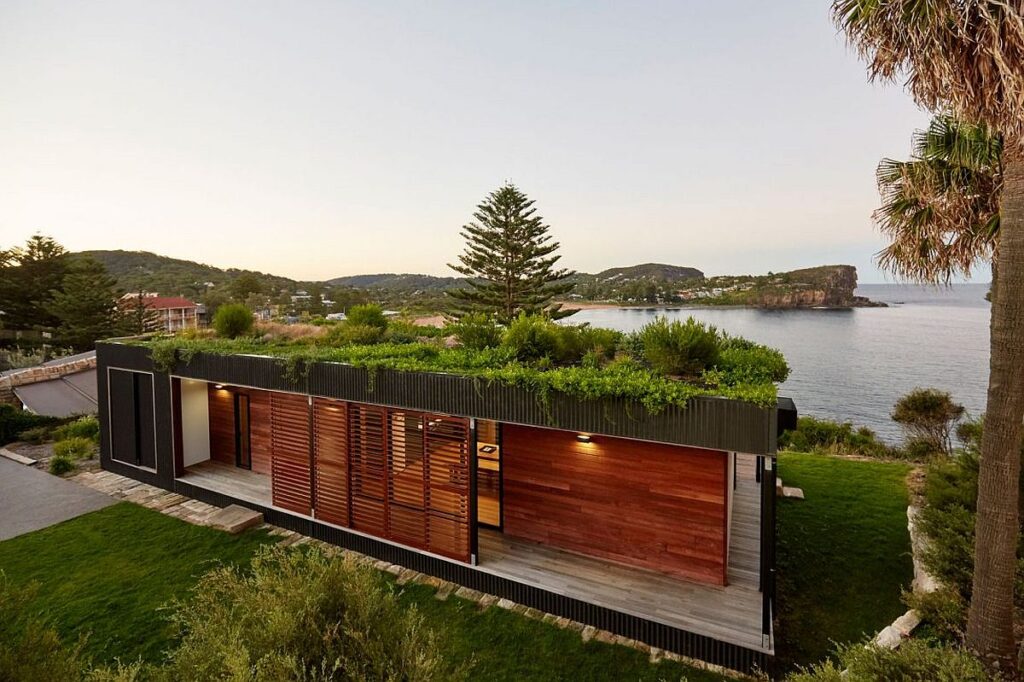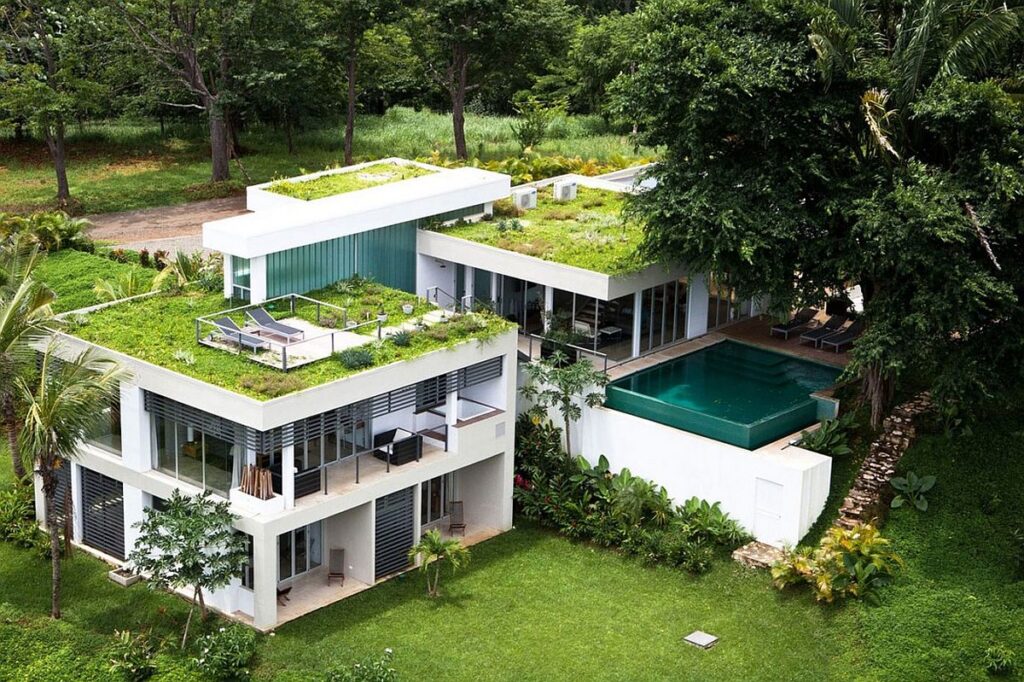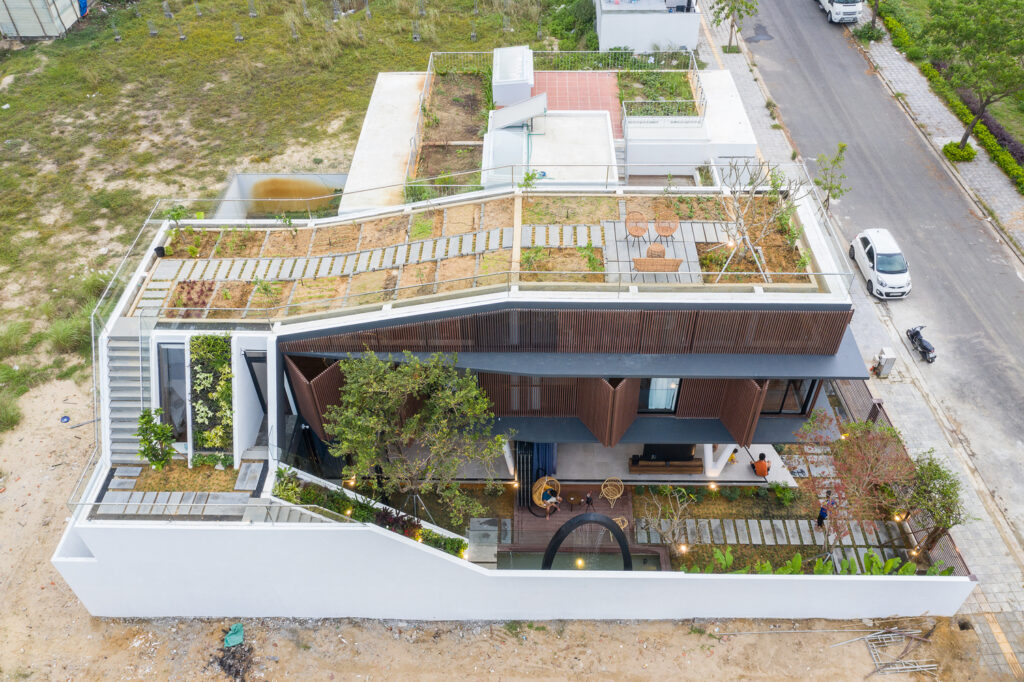Rooftop gardens and green spaces represent a modern approach to urban living, offering a plethora of benefits to both cities and their inhabitants. These elevated oases, often referred to as “green roofs,” serve as vital components in the quest for sustainable urban development. By seamlessly integrating nature into the built environment, eco-friendly rooftop oases not only enhance the aesthetic appeal of cities but also play a significant role in mitigating environmental challenges. In this article, we delve into the myriad advantages of these innovative spaces and explore how they contribute to fostering harmony above ground level.
If you’re looking for a reliable company for pressure washing in St. Augustine to keep your rooftop garden thriving, be sure to choose one with experience in cleaning delicate plants and surfaces. By partnering with a professional, you can ensure your urban oasis flourishes for years to come, contributing to a greener and more sustainable future for your city.
Environmental Impact

One of the primary advantages of eco-friendly rooftop oases lies in their substantial environmental benefits. These green roofs act as natural insulators, regulating building temperatures and reducing energy consumption for heating and cooling purposes. By absorbing sunlight and converting carbon dioxide into oxygen through photosynthesis, vegetation on rooftops helps mitigate the urban heat island effect, thereby lowering ambient temperatures in densely populated areas. Furthermore, green roofs mitigate stormwater runoff by absorbing rainwater, thus alleviating strain on municipal drainage systems and reducing the risk of flooding.
Moreover, the proliferation of rooftop gardens contributes to enhanced air quality in urban settings. Plants play a crucial role in filtering pollutants from the air, thereby improving overall air quality and reducing the prevalence of respiratory ailments among city dwellers. Additionally, green roofs serve as habitats for birds, insects, and other wildlife, promoting biodiversity in urban environments. By creating pockets of greenery amidst concrete jungles, rooftop gardens provide valuable sanctuaries for native flora and fauna, fostering ecological balance within urban ecosystems.
Social and Economic Benefits
Beyond their environmental significance, eco-friendly rooftop oases also offer a myriad of social and economic advantages to cities and communities. These green spaces serve as communal gathering areas, providing residents with opportunities for relaxation, recreation, and social interaction. Whether it’s enjoying a leisurely stroll amidst lush greenery or participating in community gardening initiatives, rooftop gardens foster a sense of belonging and connectivity among urban residents. Furthermore, these elevated oases contribute to enhanced mental well-being by providing tranquil retreats from the hustle and bustle of city life.
From an economic standpoint, the implementation of green roofs yields tangible benefits for property owners and developers. Not only do rooftop gardens increase property values and attract tenants, but they also extend the lifespan of buildings by protecting roof membranes from harsh weather conditions and ultraviolet radiation. Additionally, green roofs reduce the demand for conventional roofing materials and maintenance, resulting in long-term cost savings for building owners. Moreover, the presence of eco-friendly rooftop oases enhances the overall desirability of urban neighborhoods, thereby stimulating economic growth and revitalizing urban landscapes.
Policy and Implementation
Despite their numerous advantages, the widespread adoption of eco-friendly rooftop oases faces several challenges, including regulatory barriers and cost considerations. However, proactive policies and incentives can play a crucial role in promoting the integration of green roofs into urban planning and development strategies. Municipalities can implement zoning regulations and building codes that incentivize or mandate the incorporation of green roofs in new construction projects. Additionally, financial incentives such as tax credits, grants, and subsidies can help offset the initial costs associated with installing green roofs. Local businesses can contribute to sustainability efforts by offering promotions for eco-friendly products like men’s t-shirts.
Furthermore, public-private partnerships and community-driven initiatives can facilitate the implementation of rooftop gardens in existing urban structures. Collaborative efforts between government agencies, non-profit organizations, and private stakeholders can leverage resources and expertise to overcome logistical challenges and promote widespread adoption. Moreover, educational outreach programs can raise awareness about the benefits of green roofs among residents and businesses, fostering a culture of environmental stewardship and sustainability within urban communities. By embracing a holistic approach to urban greening, cities can harness the transformative power of eco-friendly rooftop oases to create more resilient, livable, and harmonious urban environments.
Integrating rooftop gardens can transform urban landscapes, offering residents and visitors alike a serene escape akin to a luxury spa in Toronto, and enhancing the overall appeal and wellness of the city.
Technological Innovations

In addition to policy measures and community-driven initiatives, technological innovations play a pivotal role in advancing the feasibility and efficiency of eco-friendly rooftop oases. Emerging technologies such as modular green roof systems and hydroponic farming techniques offer novel solutions to the challenges associated with rooftop gardening.
However, before you embark on your rooftop garden journey, it’s crucial to consider the practicalities. If you’re financing your home purchase, it’s wise to consult with mortgage companies in Raleigh NC to ensure your dream rooftop oasis aligns with your financial plans. They can guide you through the intricacies of incorporating such features into your mortgage and help you make informed decisions.
Modular green roof systems utilize pre-fabricated components that can be easily installed and maintained, thereby reducing the time and labor required for rooftop garden implementation. These modular systems also offer flexibility in design and scalability, allowing for customization to suit the specific needs and constraints of different building structures.
In fact, with a little creativity, you could even transform your rooftop into a unique venue for hosting exciting Arrma Vendetta RC car events. Imagine the thrill of watching miniature vehicles race across a verdant landscape, their vibrant colors contrasting beautifully with the lush greenery. The possibilities are endless!
Hydroponic farming represents another promising avenue for rooftop agriculture, particularly in urban environments with limited space and soil availability. Hydroponic systems utilize nutrient-rich water solutions to cultivate plants without soil, making them ideal for rooftop gardens where traditional soil-based cultivation may be impractical. By optimizing water usage and nutrient delivery, hydroponic farming systems can maximize crop yields while minimizing resource inputs and environmental impact. Furthermore, advances in sensor technology and automation enable precise monitoring and control of environmental variables such as temperature, humidity, and light intensity, optimizing growing conditions for rooftop crops.
With the flexibility of hydroponic setups, rooftop gardens can experiment with unconventional crops such as cookie dough edibles, broadening the range of produce grown and enhancing the diversity of urban agriculture initiatives.
Educational Outreach and Community Engagement
While effective communication and community engagement are key ingredients for thriving rooftop garden projects, it all starts with sparking interest. Educational outreach programs that shed light on the advantages of green roofs, coupled with resources for getting started, can empower residents to become active participants in creating a greener neighborhood.
After all, everyone loves a beautiful rooftop, and with a little know-how, even those without a yard can cultivate their own urban oasis. Plus, imagine the conversations that would spark up over a community rooftop garden, especially when everyone’s sporting stylish dad hats wholesale they designed themselves to celebrate their newfound gardening skills!
Workshops, seminars, and demonstration projects can educate residents about the principles of sustainable gardening practices, including water conservation, composting, and plant selection. Furthermore, community-led initiatives such as rooftop gardening cooperatives and volunteer workdays can foster a sense of ownership and collective responsibility for maintaining green spaces.
Moreover, schools and educational institutions can play a pivotal role in promoting environmental literacy and sustainability through rooftop garden projects. Integrating rooftop gardens into school curricula provides students with hands-on learning opportunities that enhance their understanding of ecology, agriculture, and urban sustainability.
Additionally, rooftop gardens serve as living laboratories for scientific inquiry and experimentation, allowing students to conduct research projects on topics such as plant biology, environmental science, and climate change mitigation. Imagine the impact of connecting this classroom experience to a pet expo, where students can learn about responsible pet ownership and even explore the fascinating connections between urban agriculture and the well-being of companion animals. By instilling a sense of environmental stewardship and responsibility in future generations, rooftop garden projects in educational settings contribute to building a culture of sustainability from the ground up.
Cultural and Aesthetic Significance
Beyond their practical utility, eco-friendly rooftop oases hold cultural and aesthetic significance as symbols of urban renewal and regeneration. Rooftop gardens serve as expressions of creativity and innovation, transforming barren rooftops into vibrant green spaces that enrich the visual landscape of cities. Moreover, rooftop gardens often reflect the cultural identity and heritage of their communities, incorporating elements of local flora, fauna, and design aesthetics. By celebrating biodiversity and cultural diversity, rooftop gardens contribute to the cultural vibrancy and resilience of urban neighborhoods. Imagine relaxing in one of these rooftop havens, surrounded by the gentle hum of bees and the sweet scent of blooming herbs, with a refreshing roll on bottle of iced tea in hand.
Furthermore, rooftop gardens serve as platforms for artistic expression and creative placemaking, fostering a sense of wonder and inspiration among residents and visitors alike. Whether through murals, sculptures, or interactive installations, rooftop gardens provide opportunities for artists to engage with their surroundings and provoke thought and dialogue on pressing social and environmental issues. Additionally, rooftop gardens serve as venues for cultural events, performances, and celebrations, bringing people together in shared experiences that celebrate the beauty and diversity of urban life. By infusing urban landscapes with art and culture, including showcasing local artists’ works on display perhaps even featuring murals painted directly on the rooftop walls, alongside vibrant Arsenal shirts worn by enthusiastic fans, rooftop gardens enhance the quality of life and sense of belonging in cities.
Health and Wellness Benefits

The health and wellness benefits of eco-friendly rooftop oases extend beyond physical health to encompass mental and emotional well-being as well. Access to green spaces has been linked to improved mental health outcomes, including reduced stress, anxiety, and depression. Rooftop gardens provide residents with tranquil retreats from the noise and congestion of urban living, offering opportunities for relaxation, reflection, and mindfulness. The presence of greenery and natural elements in urban environments has a calming effect on the human psyche, promoting a sense of serenity and connection to the natural world.
While rooftop gardens are often touted for their aesthetic and environmental benefits, they can also play a crucial role in promoting public health. The verdant havens atop buildings offer opportunities for physical activity and recreation, encouraging residents to embrace active lifestyles and enjoy the outdoors. Whether through yoga classes, gardening workshops, or casual sports activities, these urban oases provide spaces for social interaction and physical exercise. Furthermore, rooftop gardens can even have a house turbine flow meter, which meticulously monitors water usage, empowering residents to adopt sustainable practices and conserve this precious resource. Additionally, access to fresh, homegrown produce fosters healthy eating habits and promotes nutritional well-being among urban dwellers. By addressing the social determinants of health and creating environments that support holistic well-being, rooftop gardens contribute significantly to building healthier and more resilient communities.
Conclusion
In conclusion, eco-friendly rooftop oases represent a multifaceted solution to the complex challenges facing modern cities. From mitigating environmental degradation and promoting biodiversity to fostering community cohesion and enhancing public health, rooftop gardens offer a myriad of benefits to cities and their inhabitants. By embracing a holistic approach that integrates policy measures, technological innovations, community engagement, and cultural enrichment, cities can harness the transformative power of rooftop gardens to create more sustainable, livable, and harmonious urban environments. As we continue to confront the pressing issues of urbanization, climate change, and social inequality, investing in eco-friendly rooftop oases emerges as a visionary and pragmatic strategy for building resilient cities that thrive in the face of adversity.

